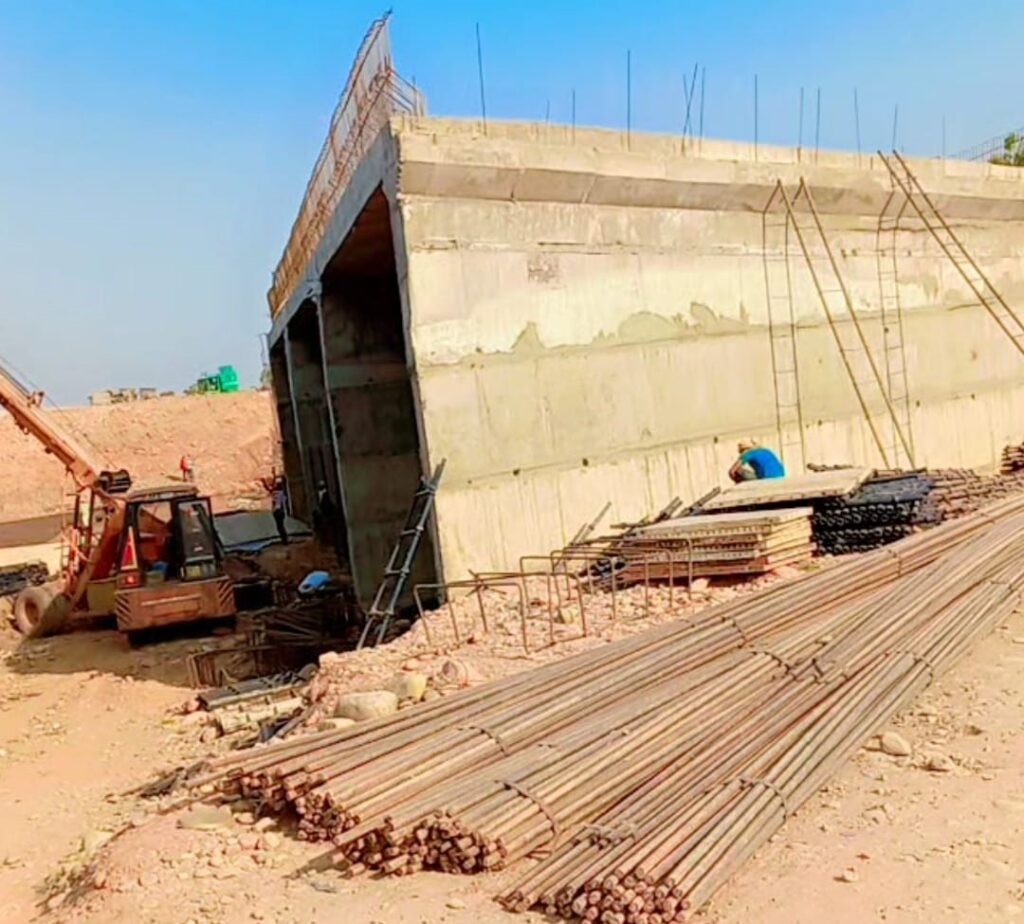A box culvert bridge is a structure consisting of rectangular or square concrete or metal box-shaped culverts arranged side by side to allow water, pedestrians, or vehicles to pass under a road, railway, or similar obstacle. These bridges are commonly used for efficient drainage, flood control, and creating underpasses, offering durability and cost-effectiveness with simpler construction and minimal maintenance needs.

Culvert Bridge pictures

A culvert bridge is a structure that allows water, pedestrians, or vehicles to pass under a road, railway, or embankment. It typically consists of a pipe or box-shaped conduit made from materials like concrete, metal, or plastic. These bridges are used for drainage, flood control, and providing passageways, offering durability, cost-effectiveness, and ease of installation and maintenance.
Culvert Structure Design and Details

A culvert is a structure that allows water to flow under a road, railway, trail, or other obstacle. Culverts are a vital part of infrastructure, effectively managing water flow and providing safe passage under roads and railways. Proper design, installation, and maintenance ensure their longevity and functionality.
hunch part in culvert construction

A haunch in culvert construction is the additional concrete or reinforcement provided at the corners where the walls meet the floor. hunch construction are incorporated into culvert design to enhance structural integrity, distribute loads evenly, minimize stress concentrations, improve hydraulic efficiency, and increase the overall durability of the culvert.
advantages of hunch construction plates
Strength and Stability: Hunch add extra material where stress concentrations are higher, improving the overall strength and stability of the culvert.
Load Distribution: They help distribute loads more evenly, reducing the risk of cracking or failure at the corners where vertical and horizontal surfaces meet.
Enhanced Durability: With better load distribution and reduced stress, haunches contribute to the long-term durability of the culvert, requiring less maintenance and repairs.

Why culvert construction is important
Culvert construction is crucial for managing water flow, preventing floods, and protecting infrastructure from water damage and erosion. By directing water under roads and railways, culverts ensure safe passage for vehicles, pedestrians, and wildlife. They also help maintain natural watercourses, supporting local ecosystems by allowing fish and other wildlife to move freely. Efficient drainage provided by culverts reduces waterlogging in urban and rural areas, minimizing associated problems. This infrastructure not only enhances safety and environmental conservation but also offers economic benefits by reducing the need for costly repairs and extending the lifespan of roads and railways.

conclusion
Culvert construction is vital for managing water flow, protecting infrastructure, and ensuring safe passage for vehicles and wildlife. It enhances safety, supports ecosystems, and provides economic benefits through reduced maintenance costs.
What is the main purpose of a culvert?
the main purpose of a culvert are To manage water flow and prevent flooding by directing water under roads and railways.
How do culverts benefit the environment?
culverts benefit the environment by They maintain natural watercourses and support wildlife movement, preserving local ecosystems.
Why is culvert maintenance important?
culvert maintenance is important because Regular maintenance ensures efficient water flow, prevents structural damage, and extends the lifespan of the infrastructure.





[…] environment. They are designed to handle specific water flow rates and volumes, ensuring that roads and railways remain functional and safe during heavy […]
[…] Box culverts are different types according to must be designed to bear the load of the traffic above. Engineers calculate the load-bearing capacity based on the type of vehicles, frequency of use, and other factors to ensure structural integrity. […]